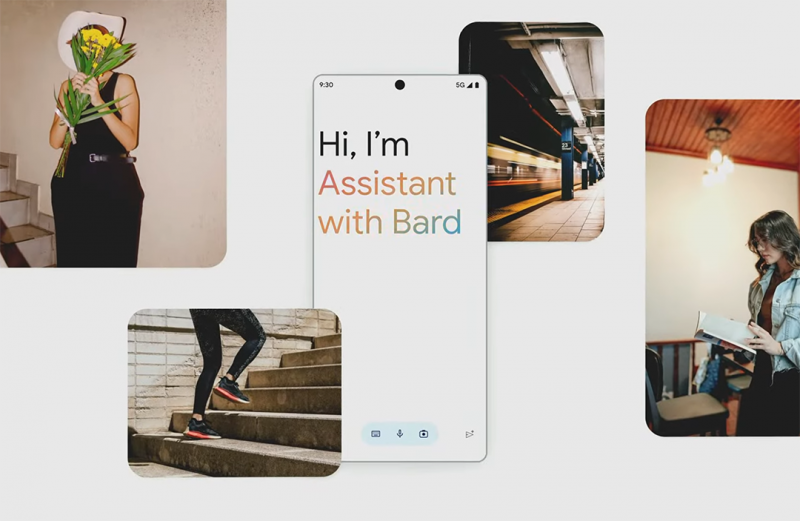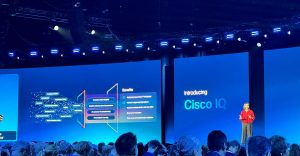Google unveils Pixel 8 phones powered by new Tensor G3 chips
Google LLC today launched its new flagship Pixel 8 and Pixel 8 Pro flagship phones – powered by a new AI-focused chip — alongside the Pixel Watch 2, bringing a raft of new artificial intelligence features capabilities across its line of devices.
As with any Google product drop, the phones focus heavily on building both software and hardware that lean heavily into the AI features and they are built around a new Google custom silicon Tensor G3, an upgrade over the G2, which is built into the Pixel 7 lineup.
Pixel 8 and Pixel 8 Pro
The Pixel 8 series continues to look similar to its predecessors with the sleek contours and the camera bar with the dark pill-shaped area that contains the lenses. Both models also retain the chromed metal appearance along the aluminum body.
The Pixel 8 sports a 6.2-inch display featuring Actua technology capable of high resolution and 42% more brightness than the previous generation. The Pixel 8 Pro features a 6.7-inch Super Actua display capable of pumping out 2,400 nits of brightness, which exceeds even some of the brightest screens, so even in direct sunlight it will be easily visible.
Aside from the usual array of upgraded cameras, the Pixel 8 Pro also comes with a temperature sensor that will allow users to check if a pan is hot enough to begin cooking or to see if a warm-water pipe is working. Google also got permission from the Food and Drug Administration for temperature data from the sensor to be used in the Thermometer App and have it saved to Fitbit, so it can be used to check for a fever.
Under the hood, the addition of the Tensor G3 chip makes it possible to bring a lot more AI enhancements to the phone, which Google says has updated Pixel 8’s capabilities in speech, photography and video.
“Compared to the first generation of Tensor on Pixel 6, our latest phones run more than twice as many machine learning models on-device,” said Monika Gupta, vice president of product management at Google. “The models themselves are also more sophisticated. That’s a massive jump in a short time, and it means that machine learning models now enhance just about every aspect of Pixel’s user experience.”
These features include better speech recognition when talking to Google Assistant, which now better understands pauses and “ums.” Gupta added that Pixel 8 is the first phone that uses the same text-to-speech model that Google uses in its data centers, which allows the Pixel to read web pages aloud and even translate them into other languages on the phone itself.
With the new Tensor G3 chip, Google was able to roll out an upgrade to Magic Eraser on Pixel 8 Pro, which allows users to “erase” larger objects from their photos. Using this feature, users can select objects or people they consider distractions and have the AI remove them from the scene completely and it will replace them with background.
Google has also added a new, somewhat uncanny, feature called “Best Take,” which allows users to get the best group shot of their friends or family. There are many situations where in a group photo process there’s always one person with her eyes closed or who has a sour expression, even after taking multiple shots, but with Best Take, it’s possible to “swap expressions” between different shots in order to get the best possible take – even if watching the selection process looks a little eerie.
“Best Take lets you use the photos you did take to get the photo you thought you took,” said Shenaz Zack, director of product management at Google.
Speech models on the phone will also allow Google Assistant to answer unknown calls using a natural voice to avoid spam. “Hi, I am Google virtual calling assistant recording this call on behalf of the person you’re trying to reach.” It can then decline the call on the behalf of the user if it’s obviously spam or let it go through if it appears to be important.
For calls that only require a confirmation, such as a doctor’s appointment, it allows a reply from on screen by simply tapping “Confirm,” and the AI can reply for the user.
Pixel 8 and Pixel 8 Pro will also receive expanded support from Google with up to seven years of software support, including operating system upgrades, security updates and regular feature drops. That’s two years longer than previous Pixel phones, which had an update lifespan of five years.
Both phones can be pre-ordered today. The Pixel 8 starts at $699 and the Pixel 8 Pro starts at $999. They will ship beginning Oct. 12.
Second-generation Pixel Watch 2
The new Google Pixel Watch 2 smartwatch is the usual all-rounder featuring a new central processing unit, an upgraded all-day battery life, additional safety features and additional sensors focused heavily on health and fitness.
As the second-generation smartwatch from Google, the Pixel Watch 2 maintains a similar design to the first generation with a 41-millimeter case and domed scratch-resistant glass crystal face. The case can also attach a number of different watch bands in various colors and the attachments are the same as the previous generation, which means that owners can swap out their older bands with no problem.
It’s display specifications are largely the same as the Pixel Watch with 320 pixels per inch and 1,000 nits of brightness, which should make it quite visible outdoors. The battery will last 24 hours with an always-on display and it will be able to charge to at least 12 hours in 30 minutes using a magnetic charging plate. It’s also possible to charge the device using a USB-C cable.
Google said the crown is larger and more flush with the circular silhouette, which makes it easier to access elements and navigation.
Under the hood, the Watch 2 has been fitted with a new quad-core CPU that provides upgraded performance and a low-power co-processor that allows it to maintain an always-on display for up to 24 hours.
The new CPU also helps support three new health data sensors and AI algorithms built into the watch. A new heart rate sensor with 10 times the optical channels of the previous sensor now has more skin coverage is capable of 40% more accurate heart rate tracking. Combined with machine learning algorithms, it can be used for better calorie burn tracking and other metrics.
Meanwhile, an electrodermal sensor incorporates heart rate, heart rate variability and skin temperature with a machine learning algorithm to detect periods of stress to notify the user that they might need to take a break. And a temperature sensor can be used to monitor sleep and changes in overall wellness.
Pixel’s safety features such as medical information and emergency sharing in have been moved to the Pixel Watch 2. Safety Check has also been added. Using this feature, users can set a time that they should “check in,” on their watch. If they fail to do so, trusted parties are informed and their last location is shared with them so that they can attempt to contact or locate them.
“Looking ahead, we see so many possibilities to use AI to bring personalized coaching, dynamic workout recommendations and even more context and insight,” said James Park, co-founder and chief executive of Fitbit. “For example, the Fitbit app can use generative AI to surface connections and correlations in Fitbit data.”
The new Fitbit app can take a holistic view of health and wellness data that provides stats and goals, coaches people on progress and uses AI to help them better understand their health data. It will soon even have an generative AI chatbot that can help them delve into the trove of information coming from their Pixel Watch to provide them insights that might be happening with their fitness routines The goal is to help them understand what’s happening in their lives and validate how they feel.
For example, to explain why the most recent run they took felt harder than usual, it might have been that the terrain was steeper or rockier than the usual route, or they were more winded than usual because they chose a longer route or had a more fitful night’s sleep. This capability is coming in beta test for select users later this year in Fitbit Labs.
The Pixel Watch 2 can be pre-ordered today with a price tag of $349 for the Bluetooth/Wi-Fi version and for $399 with 4G LTE. It will be available in stores on Oct. 12.

Google Assistant soon to be upgraded with Bard
Soon, Google Assistant will be upgraded with Bard, Google’s generative AI chatbot, which will make it capable of becoming a fully intuitive personal assistant that is responsive and contextually aware of users needs as never before.
“Google Assistant is great for quick tasks like setting timers, giving weather updates and making quick calls, and there’s so much more we’ve always envisioned a deeply capable personal assistant should be able to do,” said Sissie Hsiao, vice president and general manager for Google Assistant. “But the technology didn’t exist until now.”
Assistant with Bard will bring the “world’s most helpful assistant” on Google devices that hear, speak and see and take actions on devices for users. It will do so using capabilities already built into Google’s Bard. Such as the recently added ability for Bard to use information from a user’s Google Mail and Docs, allowing it to catch them up on recent emails they’ve received.
With these features it could pull out recent emails such as a party invitation and with a few questions such as, “Where is it?” and then pop up a map to the party, or “How far away is it?” could provide a distance and a time it would take to get there.
Using the same features would allow users to plan their own party more quickly and easily, including coming up with a shopping list and even allowing them to export the information to a Google Doc.
All of these capabilities still work with the normal Google Assistant capabilities, which means that users can still ask it to send texts or trigger other apps and services on their phone.
Users will also be able to point Assistant at landmarks and signs in their environment and ask questions and Bard will be able to answer questions able them. For example, it could tell them where they are, what’s nearby and what to they can do in the area.
Google said that’s just a sneak peek of a feature that it’s working on that will be coming to Pixel devices soon. Assistant with Bard is rolling out to select testers shortly and the capability will be expanding availability over the next few months.
Images: Google
A message from John Furrier, co-founder of SiliconANGLE:
Support our mission to keep content open and free by engaging with theCUBE community. Join theCUBE’s Alumni Trust Network, where technology leaders connect, share intelligence and create opportunities.
- 15M+ viewers of theCUBE videos, powering conversations across AI, cloud, cybersecurity and more
- 11.4k+ theCUBE alumni — Connect with more than 11,400 tech and business leaders shaping the future through a unique trusted-based network.
Founded by tech visionaries John Furrier and Dave Vellante, SiliconANGLE Media has built a dynamic ecosystem of industry-leading digital media brands that reach 15+ million elite tech professionals. Our new proprietary theCUBE AI Video Cloud is breaking ground in audience interaction, leveraging theCUBEai.com neural network to help technology companies make data-driven decisions and stay at the forefront of industry conversations.

















